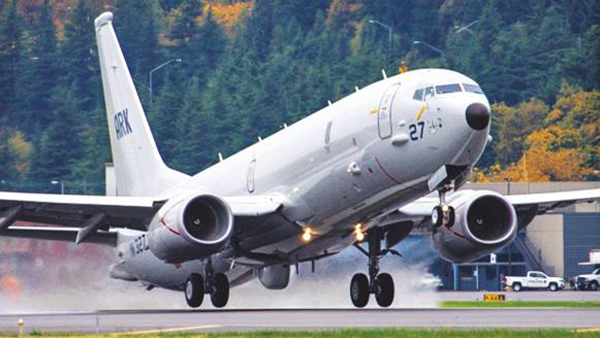Boost to Indian surveillance and anti-submarine capabilities
The Navy had inducted eight Boeing-manufactured P-8I multi-role aircraft maritime surveillance aircraft under a $2.1 billion deal inked in January 2009, while the next four will be delivered from this November onwards under another $1.1 billion contract signed in July 2016. The Indian Navy currently operates eight P-8I aircraft that are based at INS Rajali, Arakkonam in Tamil Nadu.
The arrival of the second batch from the US will enhance the aerial balance and sub-surface surveillance in India’s favour. The maritime patrol aircraft, which specialises in tracking and hunting down enemy submarines with lightweight torpedoes and depth charges, are also operated by the US and Australian navies, which operate in coordination with India to keep track of ship movements.
Background
In January 2008, Boeing proposed the P-8I, a customized export variant of the P-8A, for the Indian Navy. It features two major components not fitted on the P-8A, a Telephonics APS-143 OceanEye aft radar and a magnetic anomaly detector (MAD). A deal was signed on 4 January 2009, by the Ministry of Defence with Boeing for eight P-8Is for $2.1 billion to replace the Indian Navy’s aging Tupolev Tu-142M maritime surveillance turboprops. It was Boeing’s first military sale to India and the P-8’s first international customer.
In October 2010, India’s Defence Acquisition Council approved the purchase of four additional P-8Is. Contract signature followed in July 2016 with deliveries expected to start from 2020.
Although a “letter of request” for six more P-8Is for around $1.8 billion was issued to the US for the government-to-government deal under Pentagon’s foreign military sales (FMS) programme in July 2020, now comes news that India is set to go ahead with a $3.1-billion deal with the US to acquire 10 Boeing P8I maritime patrol aircraft for the Navy to be processed under the foreign military sales (FMS) route. The additional planes will add to its surveillance capabilities in the Indian Ocean Region.
ALSO READ: Indian Navy’s P8I Moved To Ladakh
The Navy is keen to build up a fleet of 22 of these aircraft at the earliest and the contract will ensure a continuous supply over the next four years as older maritime reconnaissance assets (Russian origin) retire.
Induction and Deployment
Hansa is the base where the Indian Navy’s tryst with maritime surveillance began. After landing at INS Hansa, the P-8I will fly to INS Rajali for a temporary deployment.
The six new P-8I aircraft will have COMCASA-protected equipment, which are much more advanced and secure than the commercially available ones. The Sea Guardians also have such equipment like advanced Global Positioning System (GPS), Identification Friend or Foe (IFF) receiver and VHF system, which are immune to jamming and spoofing from enemies.
The deployment of the P-8I comes against the backdrop of China’s repeated forays into the Arabian Sea under the guise of anti-piracy operations. Beijing has established a presence at a string of ports in Myanmar, Sri Lanka, Pakistan, Iran and east Africa which could pose a threat to India.
Though the P-8I is a long range maritime surveillance aircraft, it has also been deployed during the on-going standoff with China in Ladakh as well as during the 2017 Doklam standoff. The Indian Navy has also deployed the P-8I for humanitarian assistance and disaster relief (HADR) operations during cyclones.
The P-8Is were also deployed to keep an eye on movement of Pakistani troops after the Pulwama terror attack last year.
Tender for Landing Platform Docks Scrapped
The Indian Navy has scrapped a Request for Proposal (RFP) for the long-pending project to procure four Landing Platform Docks or amphibious warships at a cost of Rs 20,000 crore, nearly seven years after launching the acquisition process. The withdrawal was triggered by the Navy’s requirement of new specifications for the amphibious warships. The LPDs are used to transport troops, land warfare assets such as tanks, helicopters and vessels into a war zone by sea.
In a report tabled in Parliament, the Comptroller and Auditor General (CAG), in September, had taken strong exception to the India Navy’s failure to conclude the contract to procure the LPDs even after deciding on the acquisition in 2010. The Navy had issued initial tender for the mega project in 2013.
The Indian Navy now plans to start a fresh bidding process for acquisition of the fleet.


















